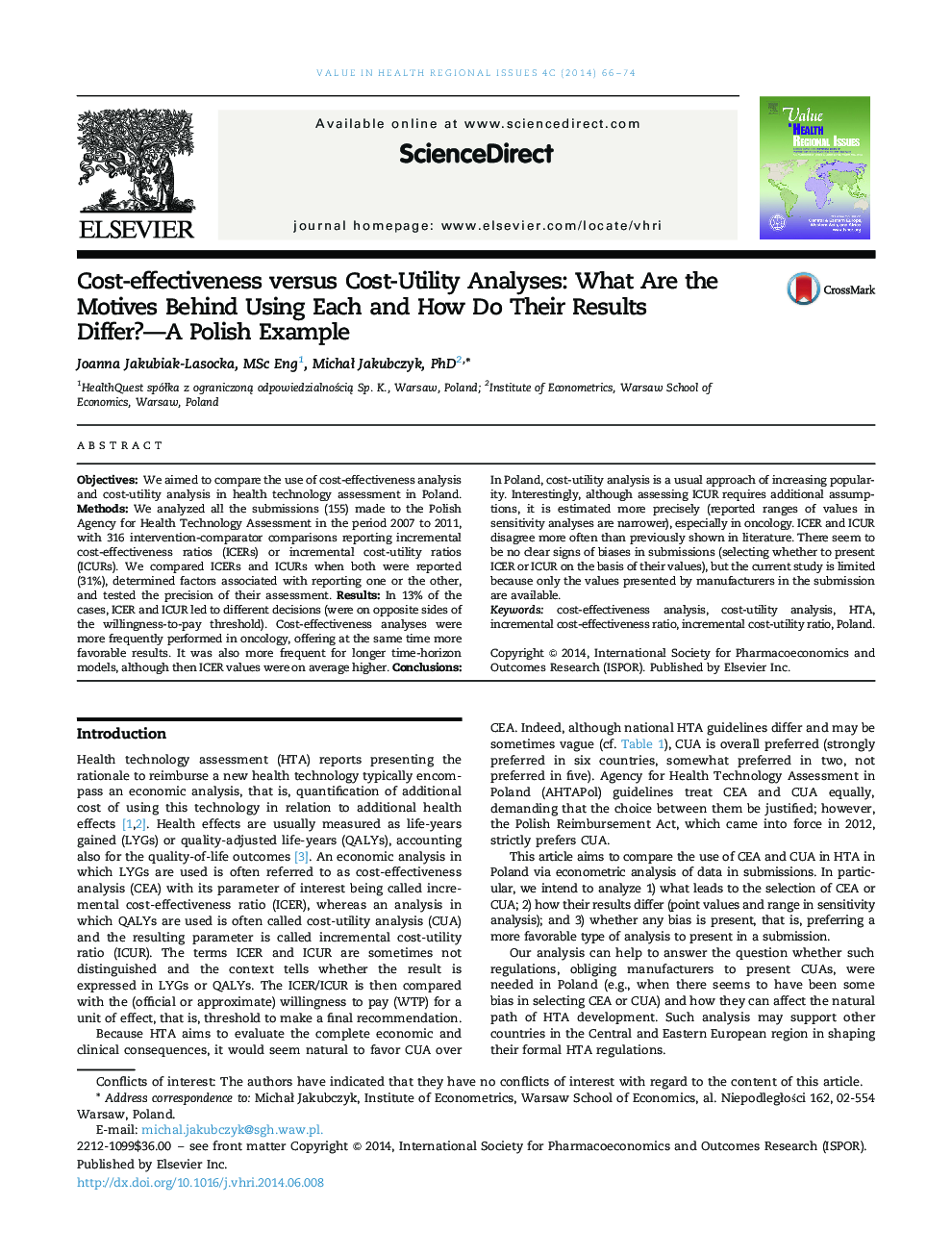| Article ID | Journal | Published Year | Pages | File Type |
|---|---|---|---|---|
| 990891 | Value in Health Regional Issues | 2014 | 9 Pages |
ObjectivesWe aimed to compare the use of cost-effectiveness analysis and cost-utility analysis in health technology assessment in Poland.MethodsWe analyzed all the submissions (155) made to the Polish Agency for Health Technology Assessment in the period 2007 to 2011, with 316 intervention-comparator comparisons reporting incremental cost-effectiveness ratios (ICERs) or incremental cost-utility ratios (ICURs). We compared ICERs and ICURs when both were reported (31%), determined factors associated with reporting one or the other, and tested the precision of their assessment.ResultsIn 13% of the cases, ICER and ICUR led to different decisions (were on opposite sides of the willingness-to-pay threshold). Cost-effectiveness analyses were more frequently performed in oncology, offering at the same time more favorable results. It was also more frequent for longer time-horizon models, although then ICER values were on average higher.ConclusionsIn Poland, cost-utility analysis is a usual approach of increasing popularity. Interestingly, although assessing ICUR requires additional assumptions, it is estimated more precisely (reported ranges of values in sensitivity analyses are narrower), especially in oncology. ICER and ICUR disagree more often than previously shown in literature. There seem to be no clear signs of biases in submissions (selecting whether to present ICER or ICUR on the basis of their values), but the current study is limited because only the values presented by manufacturers in the submission are available.
